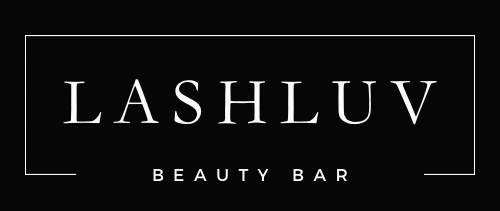Frequently Asked Questions (FAQs)
We offer a wide array of eyelash and skin care treatments using world renowned
techniques and the best medical grade skin care products. Here are a few FAQ’s about our procedures. Please don’t hesitate to reach out to us with any questions. We are always here to help!
EYELASH FAQs
An eyelash extension is a cosmetic enhancement procedure where individual synthetic or natural hair fibers are meticulously attached to each of your natural eyelashes. This process adds length, volume, and a defined curl, resulting in a fuller and more dramatic look. The extensions are carefully applied using a safe adhesive, ensuring a seamless and natural appearance. This personalized enhancement can eliminate the need for mascara, giving you longer-lasting, effortlessly glamorous lashes.
The duration of an eyelash extension procedure typically ranges from 1.5 to 2.5 hours. The exact time may vary based on factors such as the desired lash style, the number of natural lashes, and individual preferences. Our skilled technicians take the time to carefully attach each extension to ensure a precise and stunning result. The process is relaxing, and many clients use this time to unwind with their eyes closed, enjoying the pampering experience. The result is a customized and beautiful set of eyelashes that enhances your natural beauty.
The longevity of extended eyelashes varies depending on factors like your natural lash growth cycle, daily activities, and care routine. Generally, eyelash extensions can last anywhere from 4 to 6 weeks. However, for a consistently full and lush look, we recommend touch-up appointments every 2 to 3 weeks. Regular maintenance ensures that any outgrown or shed extensions are replaced, maintaining the desired volume and length. Following proper aftercare guidelines, such as avoiding oil-based products and excessive moisture, can contribute to the prolonged beauty of your extended lashes.
A lash lift and tint are cosmetic procedures designed to enhance the natural beauty of your eyelashes. During a lash lift, your lashes are meticulously curled and lifted, creating a more open and lifted appearance to your eyes. This treatment is complemented by a tint, where a safe and specially formulated dye is applied to darken and add depth to your lashes.
The entire lash lift and tint procedure usually takes about 1 to 1.5 hours. The results are semi-permanent, lasting approximately 6 to 8 weeks. This low-maintenance enhancement provides a wide-eyed and effortlessly polished look without the need for daily mascara application. The process is gentle, ensuring a comfortable experience that leaves you with beautifully lifted and tinted lashes.
After an eyelash extension procedure, your lashes should remain healthy and undamaged when the process is carried out by a skilled technician using quality materials. The extensions are carefully attached to individual natural lashes, allowing them to grow and shed naturally. It's crucial to follow proper aftercare instructions, such as avoiding oil-based products and excessive rubbing, to maintain the integrity of both the natural and extended lashes.
When applied and cared for correctly, eyelash extensions should enhance your lash line without causing harm. The extensions are lightweight and flexible, ensuring a comfortable and seamless blend with your natural lashes. Regular touch-ups and maintenance appointments are recommended to keep your lashes looking fresh and ensure optimal long-term health.
Caring for your eyelash extensions is essential to prolong their beauty and maintain the health of your natural lashes. Follow these tips:
Avoid oil-based products: Oil can weaken the adhesive, causing extensions to loosen. Opt for oil-free makeup removers and cleansers to keep your lashes secure.
Gentle cleansing: Clean your lashes regularly using a lash cleanser or a mild, oil-free cleanser. Use a gentle touch to avoid tugging on the extensions.
Brush regularly: Use a clean mascara wand to gently brush through your lashes, keeping them neat and preventing any tangling.
Be mindful of water exposure: While extensions are water-resistant, excessive exposure to water, especially hot water, can weaken the adhesive. Avoid prolonged immersion in water and high-temperature environments.
No rubbing or pulling: Refrain from rubbing or pulling at your lashes. If you need to remove makeup, do so gently without tugging on the extensions.
Sleep on your back: Sleeping on your back helps prevent friction and pressure on your lashes, preserving their longevity.
Regular touch-ups: Schedule touch-up appointments every 2 to 3 weeks to replace any outgrown or shed extensions, ensuring a consistently full and beautiful look.
By following these care tips, you can enjoy long-lasting, stunning eyelash extensions while promoting the health of your natural lashes.
Eyelash tinting is a safe procedure, and when done correctly, it should not cause your eyelashes to fall out. The tinting process involves applying a specially formulated dye to darken and enhance the appearance of your lashes. The dye is designed to adhere to the lashes without compromising their structure.
It's essential to choose a trained and experienced professional for the tinting procedure to minimize any potential risks. Aftercare is relatively simple and involves avoiding oil-based products and excessive moisture for the first 24 hours.
If done with care and adherence to aftercare guidelines, eyelash tinting should provide you with beautifully enhanced lashes without causing them to fall out. Always consult with a qualified technician to ensure a safe and satisfying experience.
Choosing between a lash lift and tint versus eyelash extensions depends on your preferences and desired look.
Lash Lift and Tint: A lash lift and tint offer a natural enhancement by curling and tinting your natural lashes. This low-maintenance option provides a lifted appearance that lasts around 6 to 8 weeks. It's an excellent choice for those seeking a subtle yet impactful look without the commitment of extensions.
Eyelash Extensions: Eyelash extensions provide a more customizable and dramatic effect by adding length, volume, and curl. They require regular maintenance to replace outgrown lashes, usually every 2 to 3 weeks. If you desire a bold and personalized look, extensions might be the preferred option.
Consider your lifestyle, maintenance preferences, and the level of customization you desire. A lash lift and tint are great for a natural look with minimal upkeep, while eyelash extensions are ideal for those wanting a more dramatic and long-lasting enhancement. Consult with our experienced technicians to discuss your goals and determine which option aligns best with your preferences.
Restoring your eyelashes after getting extensions is a gradual process that requires care and patience. Here are some tips:
Take breaks between extensions: Allow your natural lashes to breathe by taking breaks between extension applications. This helps prevent excessive strain and promotes the health of your lashes.
Use a nourishing lash serum: Incorporate a lash serum into your routine to promote lash growth and strengthen the natural lashes. Look for serums containing ingredients like biotin, peptides, and vitamins.
Be gentle during makeup removal: When removing eye makeup, especially mascara, be gentle to avoid unnecessary stress on your lashes. Use a gentle, oil-free makeup remover and a soft cotton pad.
Avoid rubbing or pulling: Refrain from rubbing or pulling at your lashes, as this can lead to breakage. If you need to itch or adjust your lashes, do so gently.
Regularly brush your lashes: Use a clean mascara wand to gently brush through your lashes. This helps in detangling and ensures that the natural lashes grow in the right direction.
Consider a lash conditioning treatment: Consult with a professional about lash conditioning treatments or nourishing masks designed to strengthen and hydrate your lashes.
Maintain a healthy lifestyle: A well-balanced diet, proper hydration, and sufficient sleep contribute to overall hair health, including your eyelashes.
Remember, patience is key when restoring your natural lashes after having extensions. If you have specific concerns or questions, don't hesitate to consult with our experienced technicians for personalized advice.
EYEBROW FAQs
Brow lamination is a semi-permanent treatment that involves setting the brow hairs in an upward direction, creating a fuller and more defined look. Results typically last 4 to 6 weeks, depending on individual hair growth.
Yes, you can still use brow products like pencils or powders after brow lamination. However, many individuals find that they need less product as the laminated brows already appear fuller and well-shaped.
Brow tinting typically lasts 4 to 6 weeks, and the longevity may vary based on factors like skincare routine and sun exposure. To extend the tint's life, avoid harsh facial cleansers and excessive sun exposure.
Brow tinting is generally safe for most individuals, but those with extremely sensitive skin or allergies should inform their esthetician before the treatment. Patch tests are often recommended to check for any adverse reactions.
Typically, eyebrow hair takes about 4 to 6 weeks to grow back after waxing. However, individual hair growth patterns may vary.
While it's possible to shape your eyebrows at home, seeking a professional's expertise is recommended for precision and to avoid common mistakes.
Temporary redness and slight irritation are common after eyebrow waxing. However, these effects usually subside within a few hours. To minimize risks, choose a reputable salon with experienced technicians.
For most people, getting eyebrows waxed every 4 to 6 weeks is sufficient to maintain a well-defined shape. Your individual hair growth rate and preferences may influence the frequency.
It's essential to inform your esthetician about any skin sensitivities or allergies before the waxing session. They can use suitable products or recommend alternative methods like threading for those with sensitive skin.
WAXING FAQs
Both techniques remove unwanted hair, but waxing involves applying warm wax to lift hair from the follicle, while threading uses twisted cotton threads to pull hair from the root. The choice between them often depends on personal preference and skin sensitivity.
Facial waxing is generally safe for all skin types, but individuals with extremely sensitive skin or certain skin conditions may want to consult with a professional before waxing.
For effective waxing, hair should ideally be at least 1/4 inch long. This allows the wax to grip the hair properly for successful removal.
While waxing is generally safe during pregnancy, hormonal changes may make your skin more sensitive. It's advisable to inform your esthetician about your pregnancy and any concerns you may have.
A Brazilian wax involves the removal of all pubic hair, while a bikini wax removes hair along the bikini line. Brazilian waxes are more extensive and may include hair removal from the buttocks.
Before waxing, ensure your skin is clean and dry. After waxing, avoid sun exposure, hot baths, and tight clothing for a day to prevent irritation. Exfoliating regularly can help prevent ingrown hairs.
FACIAL FAQs
Monthly facials are generally recommended to maintain healthy skin, but the frequency may vary based on individual skin needs and concerns.
Dermaplaning is a method of exfoliation using a scalpel to remove dead skin cells and peach fuzz. It is generally safe for all skin types but may not be suitable for those with active acne or certain skin conditions.
It's recommended to avoid wearing makeup immediately after a facial to allow your skin to breathe and benefit from the treatment. Your esthetician will advise you on the best post-facial skincare routine.
A back facial is similar to a traditional facial but focuses on the back and shoulders. It includes cleansing, exfoliation, and extractions to address specific skin concerns in that area.
Mild redness or sensitivity may occur after a facial, but it typically subsides within a few hours. Your esthetician will provide post-treatment care instructions, which may include avoiding direct sunlight and certain skincare products.
It's crucial to inform your esthetician about any skin conditions before a facial. They can customize the treatment to suit your needs or recommend alternative therapies that are gentler on sensitive skin.

EXCELLENTTrustindex verifies that the original source of the review is Google. Only been in for a couple services but really love the vibe and staff are amazing!Trustindex verifies that the original source of the review is Google. highly recommend my girl Hannah here🤍 love her workTrustindex verifies that the original source of the review is Google. Great for brow threading & shaping! Monica was so gentle and gave me exactly what I wanted. Thank you!Trustindex verifies that the original source of the review is Google. I got a customized facial from Andrea and she took such good care of my skin! She really assessed my skin and tailored the whole service to my needs and gave me such good products recommendations. I will definitely be back!Trustindex verifies that the original source of the review is Google. It is amazing to have finally discovered a salon that is not only close to home but where I am blessed with a person who knows how to accentuate my eyes. Monica is very skilled, personable and amazing in every way! You will not find someone who cares and does so much to accommodate you. Her salon offers so much more to help you care for and accentuate your appearance.Trustindex verifies that the original source of the review is Google. Andrea is awesomeTrustindex verifies that the original source of the review is Google. I personally love this place lashes always come out great and there sale for 99$ for hybrid or classic and then a fill is 80$ I love it!!!Trustindex verifies that the original source of the review is Google. I absolutely love my lash lift/tints and facials from Hannah! Her professionalism makes you feel comfortable and beautiful during and after your appointment!Verified by TrustindexTrustindex verified badge is the Universal Symbol of Trust. Only the greatest companies can get the verified badge who has a review score above 4.5, based on customer reviews over the past 12 months. Read more





